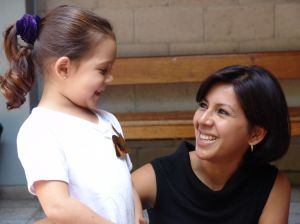Travel Tips
Great American “Gap Years”
 After finishing college and leaving the safety net of school, friends, and family, many recent grads find themselves at a crossroads. Get a job? Go to graduate school? Or … something else?
After finishing college and leaving the safety net of school, friends, and family, many recent grads find themselves at a crossroads. Get a job? Go to graduate school? Or … something else?
An alternative option that many choose is to spend a year or two teaching, volunteering or traveling, either in the U.S. or abroad.
Sometimes known as a “gap year,” this chunk of time between graduating college and entering the workforce (or re-entering academia) can be a worthwhile way for young people to contribute to society and see the country (or world), while formulating long-term plans for the rest of their life.
The term “gap year” originated in the U.K. and Europe, and referred to a year off between high school and college. However, the term is now commonly used to describe any significant time off taken between major life stages, particularly after college. It’s practically a rite of passage nowadays for young people from Iceland to Australia to set off on the quintessential post-university journey to “find themselves.”
For Americans who wish to attempt such a journey, the gap year concept may seem out of reach due to the rising amount of college loan debt. MSN Money estimates that the average student owes $20,000 by the time he or she graduates.
The good news is that there are options out there, and they don’t require you to mortgage the rest of your life to make them happen – some even allow you to defer repayment of your loans.
PEACE CORPS
Run by the U.S. government, the Peace Corps was established in 1960 by President John F. Kennedy to “promote world peace and friendship.” For a period of slightly more than two years, volunteers go out and essentially “save the world” through teaching and development projects abroad.
 It is an adventure worth taking, and most volunteers will testify to the personal development and growth they experience.
It is an adventure worth taking, and most volunteers will testify to the personal development and growth they experience.
In order to ensure that volunteers are in it for the right reasons, the Peace Corps application process is tedious and rigorous. Applicants are asked to provide: references from an employment supervisor, a volunteer work supervisor and a close friend; personal essays; a personal interview; and medical and legal checks.
The Peace Corps is not for the faint of heart, but rather for individuals who are willing to live in very different, sometimes difficult, situations. Often placed in remote, third world locations, volunteers are expected to live like the villagers themselves. The Peace Corps flies volunteers out to their location, pays for all their living expenses while they are working, then pays a little over $6,000 upon completion of their period of service. Full medical and dental insurance is also provided, including primary care, hospitalization and medical evacuation, as well as workman’s compensation for any injuries incurred during the period of service.
Additional health insurance is also available through an assistance program called CorpsCare. Additionally, there are loan deferment programs for Peace Corps participants.
These are just a few of the many benefits available for Peace Corps volunteers. However, since the Peace Corps does require a significant time commitment, it may not be the right option for students interested in going to graduate school sooner rather than later, or for those who are impatient to start paying off private student loans. For more, visit www.peacecorps.gov/
AMERICORPS
 AmeriCorps, like the Peace Corps, is a U.S. government-sponsored program. However, unlike the Peace Corps, AmeriCorps participants remain in the United States, with the exception of one program located in Johannesburg, South Africa.
AmeriCorps, like the Peace Corps, is a U.S. government-sponsored program. However, unlike the Peace Corps, AmeriCorps participants remain in the United States, with the exception of one program located in Johannesburg, South Africa.
Participants in AmeriCorps help communities and cities build affordable housing, fight illiteracy, and manage after-school programs. The program covers living expenses, medically insures participants, and pays an education award of $4,725 upon completion.
AmeriCorps offers a feasible alternative to the Peace Corps for those who don’t want to commit too much time or go too far from home. For starters, it’s only a one-year program — but still an impressive resume-builder. And because most of the programs are located domestically, it can be a logistically easier option for graduate school applicants who need to travel around the country for interviews.
And, of course, the desire to travel and experience a different culture doesn’t necessarily require a passport—simply moving from a cosmopolitan American city to a small town, or vice versa, can be a life-altering experience. For more, check out www.americorps.org/
WORLDTEACH
WorldTeach was founded in 1986 by a group of Harvard graduates in response to the need for educational assistance in the developing world. WorldTeach has programs that range from summer sessions to a full year, in 15 countries such as Costa Rica, Rwanda, Bulgaria and Bangladesh.
 One of the benefits of WorldTeach is that it’s affordable, and in many cases, entirely free. Free programs include a year in American Samoa, Bangladesh, Micronesia, and more. Paid programs include a year in Namibia, which costs nearly $6,000 (but may offer grants of up to $1,000) and a year in South Africa, which costs nearly $5,000.
One of the benefits of WorldTeach is that it’s affordable, and in many cases, entirely free. Free programs include a year in American Samoa, Bangladesh, Micronesia, and more. Paid programs include a year in Namibia, which costs nearly $6,000 (but may offer grants of up to $1,000) and a year in South Africa, which costs nearly $5,000.
The organization covers your flights, housing, food, medical insurance, and a small stipend. Participants pay a $1,500 deposit, but it is refunded after the completion of the program.
Kellie Prank, a recent participant in WorldTeach, described how the organization trained her to teach English as a Second Language for about a month, and then dispersed her and other volunteers all around Chile. They then met up midway through the program, and again at the end.
Due WorldTeach’s simplicity and small scale, there appears to be less red tape, and perhaps the ability to make real change for a select few students in countries that can use the help.
https://worldteach.org/
J.E.T. PROGRAM
Another program, J.E.T., which stands for the Japan Exchange and Teaching Program, recruits participants to come to Japan and work in one of three positions: as an English language teaching assistant; as an international relations coordinator who works in communities or exchange programs; or as a sports exchange advisor. Volunteers have to undergo a long screening process before they are offered a place and flown to a Japanese city.
The minimum time commitment is one year. Participants can choose locations ranging from remote villages to big cities, but you’re not guaranteed your first choice.
Employment in the JET Program is paid and full-time. Participants are compensated with an annual salary of about ¥3,600,000 ($33,496), which is generous enough to allow for discretionary spending, traveling, or saving after paying for rent, food and taxes. As a result, the program is popular among those who want to be able to pay off some college debt while exploring Japan and its many wonders.
https://www.us.emb-japan.go.jp/JETProgram/homepage.html
By Tashiya Gunesekera for PeterGreenberg.com.
Find out about more great Voluntourism experiences.
Or for even more in-depth experiences, try Expert Voluntourism: Doing Your Job for Free and Loving Every Minute.












